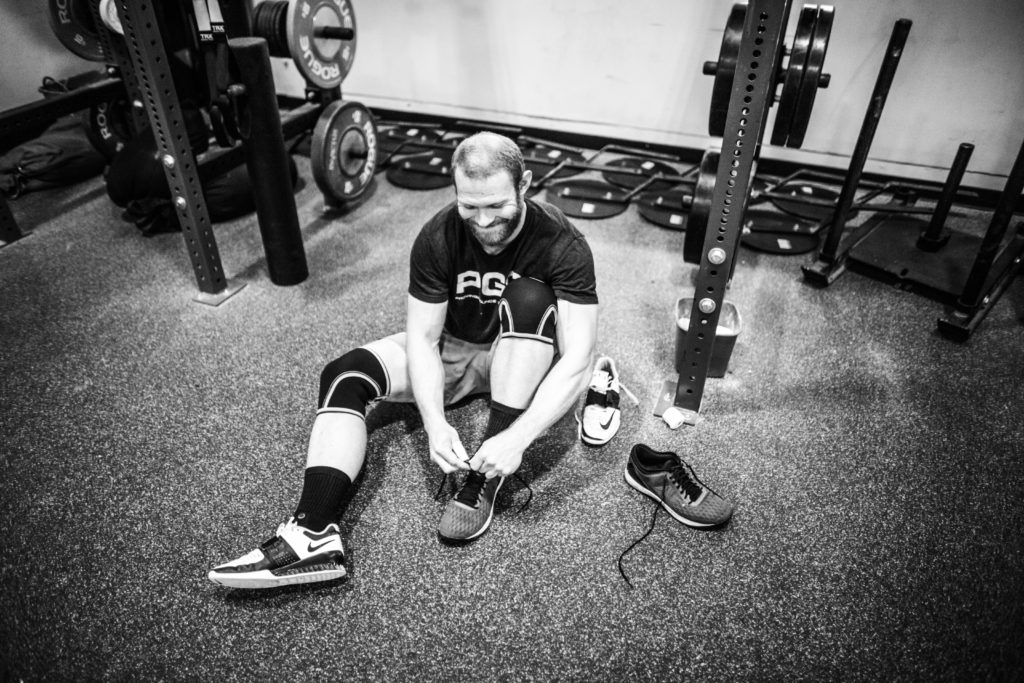
How to Select Lifting Shoes & What ‘Gains’ to Expect
Written by Tricia Moore
As a Coach, I am tasked with watching movement. I am required to help my clients understand what steps they need to take to move with the most integrity, so they are safe and get stronger. I often have conversations regarding mobility, techniques, auxiliary work, skill practice, and of course gear.
One of the most common questions is, “Hey, do you think some lifting shoes would help my squat, clean, etc.?”
My answer: “Yes, you may feel more stable, supported, and connected to the ground.”
For our newest members, this can be a daunting task. They have many questions that need to be addressed. Are there different types of weightlifting shoes? What features should they look for? When should they wear them? And, what are they designed to do? The good news, I have all of your answers right here.
The Role of Confidence
First, let’s address the elephant in the room, they look a little crazy. So, it’s important you get a pair you feel good in. Weightlifting is as much about confidence and aggression as it is strength so get a pair that will rock your world. The shoe should feel good and you should like the color, brand, and overall style. Confidence will play a role in your lifting, and you should feel confident in your ability and your gear.
In your journey to locate your new pair of weightlifting shoes, you will see three main types. The first, and most recognizable are Olympic Lifters. These shoes are designed for the snatch and the clean and jerk. Oly Lifters, as they are commonly referred to, often have thick soles and solid heels. The raised heel (17.0-19.0 mm) allows a deeper squat and encourage an upright torso. Consider for a moment the catch position in the clean or snatch, the lifter must maintain an upright torso in a deep squat.
Olympic Lifters – The High Risers
Often mobility limitations such as tight calves or ankles don’t allow the athlete to maintain his or her heels on the ground in the bottom of the squat. Or, anterior/quad dominance may affect the athlete’s ability to recruit the posterior chain/hamstrings and glutes. We may see the athlete roll to the toes in the bottom of the squat. In either case, Olympic Lifters can help train them to maintain contact with the ground and engage the posterior chain – with time this can lead to a new, safer movement pattern.
Chucks – The Minimalists
On the other end of the spectrum, you may notice minimal or flat soled shoes such as Converse Chucks, or you may even see folks barefoot. Deadlifts or low bar back squats are common lifts that require the lifter to maximize their contact with the ground and feel the ground directly with the nerves in their feet, as it stimulates the nervous system. You may even see lifters stomp the ground before a lift, minimal shoes with a flat thin sole are ideal for contact with the platform. Provided that mobility is good through the ankle and hip, these may be a good option for you.
Powerlifting Shoes – The Middle Ground
Somewhere in the middle, we find Powerlifting shoes. These shoes typically have a slightly shorter heel (15mm an inch or so, depending on the brand). These shoes are designed for power lifts such as squatting variations, and bench press. The raised heel helps accommodate position and can help athletes sit back, maintain heel contact, and engage the hamstrings. These shoes are stable and can also assist in guiding the athlete toward the proper movement pattern.
Some athletes don’t use weightlifting shoes, but those that make the commitment to getting the most out of their training have never looked back. The benefits are highly individual, but most athletes with joint restrictions or impairments may find just a little lift in the heel makes it worth the investment.
Of course, shoes alone will not help at all if you don’t have proper technique. So, keep learning, work with your coach, prioritize mobility and activation techniques, get some good looking new shoes, and you will be on your way to some big gains.